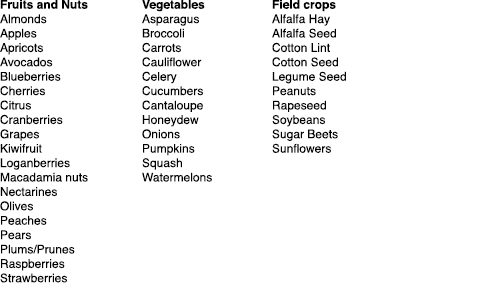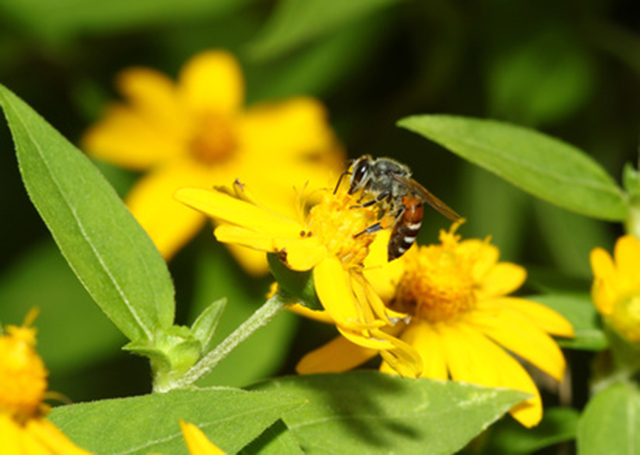Bee colonies are collapsing, which could spell serious trouble for the food we eat.
Bees cross-pollinate much of the common produce that humans eat, including apples, avocados, broccoli, carrots, cucumbers, almonds, and so much more.
Without bees, none of these foods can grow.
According to the National Resources Defense Council (NRDC), scientists believe that bee colonies are collapsing because of pesticide exposure, parasitic mites, and lack of food.
In the 1940s, there were 5 million honey colonies in the U.S., while today there is only half that number. The news gets worse, as the USDA reports that honeybee deaths surged in the last year due to Colony Collapse Disorder.
Colony Collapse Disorder (CCD) is a dead bee colony that contains no adult bees, or a colony with just a live queen and only immature bees.
According to the Agricultural Research Service (ARS): “Colony losses from CCD are a very serious problem for beekeepers. Annual losses from the winter of 2006-2011 averaged about 33 percent each year, with a third of these losses attributed to CCD by beekeepers. The winter of 2011-2012 was an exception, when total losses dropped to 22 percent. A 1-year drop is too short a time period to count as definitive improvement in honey bee colony survivorship. At least 2 to 3 years of consistently lower loss percentages is necessary before it is possible to be sure that CCD is on the decline.”
From April 2014 to April 2015, 42 percent of bee colonies were lost, which is the second highest annual loss to date.
The ARS wrote: “If losses continue at the 33 percent level, it could threaten the economic viability of the bee pollination industry. Honey bees would not disappear entirely, but the cost of honey bee pollination services would rise, and those increased costs would ultimately be passed on to consumers through higher food costs.”
The following is a list from the NRDC of foods that bees pollinate:

Note: None of the information in our website is intended to diagnose, treat, cure or prevent any illness or disease. The content on our website is for educational purposes only.
DON’T FORGET to sign up for our weekly newsletter to get our latest articles, updates, free recipes and giveaways.
Common pesticides attract bees and kill them.
Bee-friendly gardens may be killing our treasured bees.
WHO labels Monsanto’s glyphosate as possible carcinogen.
Roundup herbicide triggers antibiotic resistance.
New study shows that bee venom may kill HIV.
For a DIY natural bee repellent.
REFERENCES:
1. “Honey Bee Health and Colony Collapse Disorder.” Agricultural Research Service. United States Department of Agriculture, n.d. Web. 01 June 2015.
2. “Vanishing Bees.” NRDC. National Resources Defense Council, n.d. Web. 01 June 2015.
3. “US Honeybee Losses Soar Over Last Year.” Mercola.com. Mercola.com, 26 May 2015. Web. 01 June 2015.
4. “U.S. Honeybee Losses Soar over Last Year, USDA Finds.” Reuters. Thomson Reuters, 13 May 2015. Web. 01 June 2015.

















